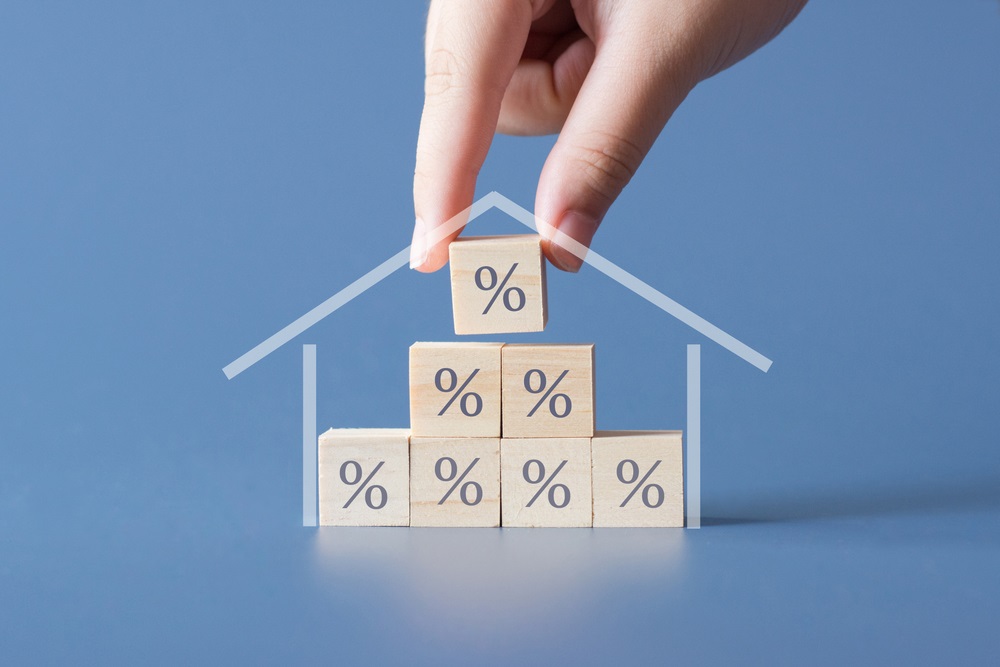Mortgage rates of all types have been climbing since the Bank of England began raising its rate, with those on their standard variable rate (SVR) paying the highest in over 13 years.
 This is according to new analysis of average mortgages, which shows lenders’ typical SVR is now at 4.91% – the highest recorded since February 2009.
This is according to new analysis of average mortgages, which shows lenders’ typical SVR is now at 4.91% – the highest recorded since February 2009.
The SVR is the rate borrowers pay once their introductory mortgage deal come to an end. It is advised, if possible, borrowers remortgage to another deal when their initial mortgage deals ends – but those who don’t will pay the SVR.
At an average of 4.91% – which is 1.66% higher than the average two-year fixed rate – it highlights how expensive borrowers’ repayments could be by not switching.
Indeed, Moneyfacts.co.uk, which has uncovered this data, said this highlights there is a strong incentive for anyone on an SVR to remortgage.
Eleanor Williams, finance expert at Moneyfacts.co.uk, said: “The difference between the average SVR and the average two-year fixed rate was 2.06% in December 2021, and over recent months this difference has shrunk to 1.66% as lenders react to a changing economic landscape.
“However, the motivation to secure a new deal remains clear, as those eligible could still potentially make significant savings, and gain peace of mind with a new fixed deal.”
By how much have fixed-rate mortgages increased?
Whilst they are still much cheaper, the interest rates on fixed rate mortgages have also been rising since the Bank of England (BoE) began raising rates in December 2021.
Moneyfacts revealed the average overall two-year fixed rate has risen for the eighth consecutive month to now reach 3.25%.
This is a 0.91% increase since December 2021 and the highest recorded by Moneyfacts since November 2014 (3.31%).
Five-year deals are also more expensive. Borrowers taking out a five-year fixed mortgage deal will now be paying 3.37% which is 0.73% higher than the equivalent rate in December 2021.
How much have tracker mortgages increased by?
For those borrowers who are on tracker rates, which rise and fall in line with the BoE base rate, the average rate has climbed to 2.54%, which represents a 0.96% rise since December.
Moneyfacts said this was the highest recorded since September 2014 (2.61%).
The analysis also showed there were fewer mortgages to choose from than in December. Indeed, the number of deals has dropped by 328.
Meanwhile, deals are not sticking around for long when they are released to the market.
Eleanor added: “Product shelf-life has fallen back to the record low of 21 days this month, as providers continue to tweak their offerings and condense their ranges in light of an ever-changing economic background, which means that some deals may not be available for long before they are withdrawn or amended.”
What does this mean for my mortgage?
You can find more advice about how these increases will impact you and how you can ensure you are on the best deal here.
Most experts advise anyone on an SVR to remortgage to a fixed deal as the interest rate will be lower and you will be able to lock into this deal for a specified period, and shelter from future interest rates rises.
For more advice or to find out in detail more about your options speak to a broker.
[box style=”4″]
Need help to find a mortgage? What Mortgage has teamed up with L&C to offer you expert advice on the right mortgage deal.
Whether you’re buying a new home, remortgaging to a new deal or buying an investment property, L&C can help – and you’ll pay no fee for their advice. To find out more, click here.
[/box]














